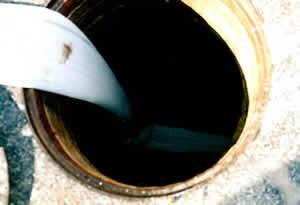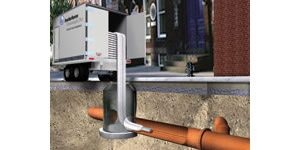Sewer Line Rehabilitation and Replacement

The District’s long term master capital plan provides for the continued replacement or rehabilitation of its existing collection system lines on an annual basis. CAWD has over 81 miles of collection lines and 5 employees whose job is to ensure that it is able to collect and transport wastewater to the District’s Wastewater Treatment Facility. The District is committed to ensuring the integrity of its collection system – to meet this goal means that our crews are out in the field every week cleaning and maintaining the lines. However, although a sewer line can last over 50 years if well maintained, we still have the need to replace lines that have developed problems due to shifting earth, infiltration and inflow, cracks in the pipes, etc.
District crews replace or repair main lines, manholes, wet wells, and cleanouts. Large scale jobs are typically contracted out to a firm that specializes in replacement or rehabilitation of sewer mains. The District utilizes several techniques, depending on the terrain and conditions – but we find more and more that we are depending on some type of pipe bursting or pipe lining technology because of its cost savings and ease of installation. Both of these technologies create very little disturbance for the public. In fact, people can walk right past the truck parked by one of our manholes and not have any idea of the work that is being done underground.
Pipe bursting is a process that is designed for replacing existing pipelines with new and larger pipelines. A new pipe of equal or larger diameter is inserted into the existing pipeline by bursting open the existing pipe and pulling or pushing the new pipe into the old pipe and expanded surrounding soil. Pipe bursting is suitable for replacing pipes made of brittle material such as vitrified clay, unreinforced concrete, asbestos cement, some polyvinyl chloride (PVC) and cast iron. Bursting progress of 2 to 10 feet per minute is possible.
What are the benefits of pipe bursting?

Pipe bursting has several advantages over open-cut trenching and other trenchless rehabilitation methods:
Pipe bursting allows for replacement of pipes without disturbing surface structures.
Potential problems with existing pipes are minimized because pipe-bursting methods follow the existing pipe path.
For smaller sizes of pipe, pipe bursting is the only trenchless technology that can be used to upsize the existing pipe.
Because it is trenchless, excavation is minimized, which lessens effects on existing landscaping and structures. The bursting heads on the piercing tool can be removed at the end of the line so that the tools may be removed through the new line. This eliminates the need for an exit pit in some instances.
Pipe bursting reduces the amount of site restoration required.
Pipe lining was first put into practice in the United Kingdom in the early 1970s. The process involves inserting a resin-saturated flexible lining into the existing sewer. Air or water under pressure is forced into the tube, which turns the lining inside out and causes it to fit tightly to the existing sewer walls. Hot air or water is circulated throughout the tube to harden the resin, completing the curing process. When the curing process is completed, a new pipe has been created that is free of cracks and holes that allow rainwater and roots to enter the sewer and cause operational problems such as stoppages and overflows.
What are the benefits of Pipe Lining?
Pipe Lining has many advantages, including:
Pipe Lining allows for replacement of pipes without disturbing surface structures or other utilities.


It produces a seamless, jointless pipe lining with minimal reduction of the original pipe diameter and leaves no voids to be grouted after the liner is installed.
Though the liner system reduces pipe size by the thickness of the liner, the smooth interior of the liner reduces friction, which increases flow capacity.
Private service connections are reconnected without excavation. A dimple is formed where the lining passes a service connection. Close circuit TV easily locates the dimple and cuts out the lining using remote techniques.
The finished product has a 50-year design life, the same as that of a brand new pipe.
